
Bringing home a puppy is one of life’s purest joys. That wagging tail, those big soulful eyes, and the endless cuddles make every day feel like an episode of your favorite feel-good show. But let’s be honest—training them can sometimes feel like riding a rollercoaster blindfolded. One moment you’re snapping adorable photos of their playful antics; the next, you’re frantically searching “how to stop my dog from chewing everything” at 2 a.m., wondering if adopting was a terrible idea.
Sound familiar? You’re not alone. The truth is, raising a puppy comes with its fair share of challenges, but here’s the silver lining: mastering puppy training doesn’t have to mean losing sleep—or your sanity. With modern techniques rooted in science, empathy, and innovative tools, you can turn what feels like chaos into a rewarding journey that strengthens the bond between you and your furry best friend.
Imagine this: instead of dreading potty accidents or constant barking, you’re confidently guiding your pup through positive reinforcement methods that actually work. Picture yourself using products like the ZippyPaws Burrow Toy to channel their energy into problem-solving games, or apps like Puppr to track milestones and access expert tutorials tailored to your puppy’s breed. These aren’t just gimmicks—they’re proven solutions designed to save you time and frustration while keeping your pup engaged.
Take Sarah, for example, a first-time dog owner who struggled with her Labrador mix’s habit of jumping on guests. Frustrated after months of inconsistent results, she discovered clicker training paired with high-value treats like Zuke’s Mini Naturals . Within weeks, her once unruly pup transformed into a polite greeter, earning compliments from friends and family. Stories like Sarah’s prove that with the right approach, even the toughest behaviors can become manageable.
But it’s not just about tricks and treats—it’s about understanding your puppy’s unique needs. Did you know puppies experience something called neuroplasticity , where their brains adapt rapidly during the first six months? This means they absorb information quickly but also get overwhelmed easily. By breaking training sessions into short bursts (5–10 minutes), you align with their attention span while avoiding burnout—for both of you.
And when patience runs thin? Remember, self-care isn’t selfish—it’s essential. Whether it’s taking five minutes to breathe deeply or leaning on online communities like Reddit’s r/Puppy101 for support, finding balance ensures you stay calm and consistent.
So grab your leash, cue the belly rubs, and dive into this blueprint for success. With these strategies—and a little perseverance—you’ll unlock the secret to harmonious puppy training without sacrificing your peace of mind. Because at the end of the day, nothing beats the joy of watching your pup grow into a happy, well-behaved companion. Ready to transform frustration into fun? Let’s get started.
Before diving headfirst into commands, tricks, or scolding your pup for yet another chewed-up shoe, let’s pause and take a moment to step inside their world. Puppies aren’t just smaller versions of adult dogs—they’re complex, rapidly evolving beings with brains wired for learning at lightning speed. Understanding how their minds work isn’t just fascinating; it’s the key to smarter, more effective training that sets both you and your furry friend up for success.
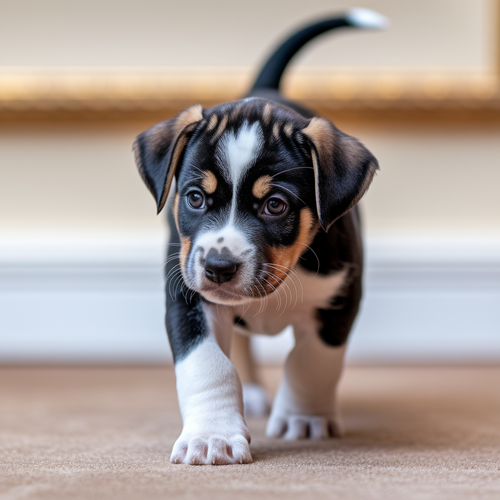
Ever wonder why your puppy seems to master “sit” one day only to forget it the next? Or why they can’t resist chasing leaves despite your best efforts to teach them otherwise? The answer lies in neuroplasticity , a term scientists use to describe the brain’s incredible ability to adapt and form new connections. During the first six months of life, puppies experience heightened neuroplasticity, making this period crucial for shaping behavior—but also incredibly delicate.
This rapid brain development means two things:
For example, imagine trying to teach a 10-week-old Labrador mix to stay still for 30 minutes straight. Not only would it be nearly impossible, but it could also damage your bond by creating unnecessary stress. Instead, think of training as planting seeds rather than building walls. Short, focused sessions (5–10 minutes) allow you to nurture those seeds without overwhelming your pup’s developing mind.
Take James, a first-time dog owner who adopted a rambunctious Australian Shepherd named Luna. At first, he struggled with her short attention span during training sessions. After researching puppy brain development, he switched to bite-sized lessons using tools like the Outward Hound Nina Ottosson Puzzle Toy . These interactive toys kept Luna mentally stimulated while reinforcing basic commands like “drop it” and “leave it.” Within weeks, she began responding consistently, proving that aligning training with her cognitive abilities made all the difference.
Products like puzzle toys aren’t just fun distractions—they tap into your puppy’s natural curiosity, helping them learn through play. Pair these with high-value treats like Blue Buffalo Wilderness Trail Treats to keep motivation high. When rewards are meaningful, your puppy associates learning with positivity, not fear or confusion.
Here’s the truth: traditional, rigid training methods often backfire because they focus on control instead of connection. A puppy’s brain craves collaboration, not coercion. By approaching training as a partnership—rewarding effort over perfection—you build trust. And trust? That’s the foundation of every well-behaved dog.
Consider crate training, a common challenge for many owners. Instead of forcing your pup into their crate, make it an inviting space with cozy bedding and calming scents like lavender-infused sprays (Calming Dog Bed Spray by Earth Rated ). Reward calm behavior with praise or treats when they enter voluntarily. Over time, they’ll view the crate as a safe haven, not a punishment zone.
Understanding your puppy’s psychology isn’t just about avoiding meltdowns—it’s about unlocking their potential. Every wagging tail, every curious sniff, every clumsy leap toward you is an opportunity to guide them toward becoming the confident, well-adjusted companion you’ve always dreamed of. So, before you dive into commands, remember: patience isn’t just a virtue—it’s a necessity. With science on your side and love in your heart, you’re not just training a dog—you’re raising a lifelong friend.
And isn’t that worth every ounce of effort?

Let’s face it—puppies weren’t born to sit still and follow orders. They’re energetic, curious, and driven by one thing above all else: play. So why fight their instincts when you can harness them? Modern puppy training thrives on play-based learning , a technique championed by animal behaviorists worldwide. By transforming games into lessons, you’ll not only make training enjoyable but also incredibly effective. Here’s how to turn every romp in the yard into meaningful progress.
Rigid drills and repetitive commands might work for robots, but puppies are anything but mechanical. Their brains crave engagement, creativity, and fun. When you incorporate play into training, you tap into their natural instincts while building stronger bonds. For instance, teaching “fetch” isn’t just about throwing a ball—it’s an opportunity to practice recall skills. Imagine this: you call your pup’s name before tossing the ball, rewarding them with praise or treats when they return. Over time, that same enthusiasm for fetching translates into reliable recall—even when distractions like squirrels or other dogs enter the picture.
Consider Lisa, a first-time dog owner who struggled with her Beagle mix’s wandering tendencies. She swapped traditional leash walks for interactive games using the Chuckit! Ultra Ball Launcher . Not only did her pup love chasing after the ball, but she also reinforced coming back each time by offering small rewards like Greenies Dental Chews . Within weeks, her once-distracted Beagle was trotting back to her side without hesitation. Progress doesn’t get much sweeter than that.
To maximize the benefits of play-based learning, invest in tools designed to stimulate your puppy’s mind as much as their body. Puzzle feeders like the Outward Hound Hide-A-Squirrel Toy or treat-dispensing balls like the KONG Classic Dog Toy keep your pup engaged while subtly teaching focus and problem-solving skills. These toys aren’t just entertaining—they encourage patience and persistence, qualities that translate beautifully into real-world behaviors like waiting calmly for meals or ignoring tempting distractions.
For example, Sarah noticed her Border Collie mix had boundless energy but lacked focus during training sessions. She introduced the Nina Ottosson Dog Brick Puzzle Toy , hiding kibble inside compartments that required pawing or sniffing to open. Not only did this tire him out mentally, but it also taught him to concentrate—a skill that later helped him excel at agility courses.
Play-based learning does more than teach commands; it strengthens the emotional connection between you and your pup. Think about it: when was the last time you laughed uncontrollably watching your dog chase bubbles or wrestle with a squeaky toy? Those moments of pure joy remind us why we fell in love with our furry friends in the first place. And guess what? Your puppy feels it too. Every playful interaction builds trust, making them more eager to cooperate during formal training sessions.
Take tug-of-war, often dismissed as “just a game.” When done correctly—with clear rules like releasing the rope on command—it teaches self-control and reinforces polite behavior. Pair this with durable toys like the Tuggo Waterproof Tug Toy , which doubles as a water-fetching tool, and suddenly you’ve turned bath time prep into a bonding session.
By embracing play-based learning, you’re not just shaping good behavior—you’re nurturing a lifelong love for discovery. Puppies trained through fun grow into confident, well-adjusted adults who see challenges as opportunities rather than obstacles. Whether it’s mastering recall, improving focus, or simply enjoying each other’s company, every game is a step toward becoming the dynamic duo you were meant to be.
So grab a ball, a puzzle toy, or even a handful of bubbles—and watch as your wild little explorer transforms into a focused, joyful companion. After all, if learning feels like play, everyone wins.
Positive reinforcement has long been a staple of effective puppy training—but it’s time to rethink how we reward our furry friends. While treats are undeniably powerful motivators, relying solely on snacks can limit your pup’s learning potential. Enter Positive Reinforcement 2.0 : a modern approach that goes beyond food, incorporating praise, touch, and even environmental rewards to create deeper connections and lasting results.
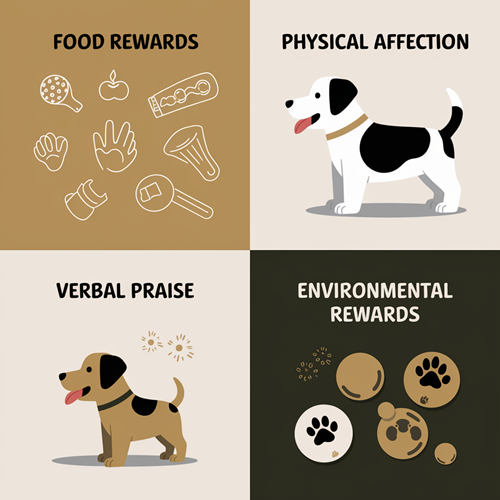
Studies show that combining multiple types of rewards—such as verbal praise, physical affection, and access to exciting experiences—strengthens neural pathways associated with desired behaviors. Translation? Your puppy not only learns faster but also retains those lessons longer. Think about it: if every “good job” comes with a treat, what happens when you run out during a walk or leave them at home? By diversifying rewards, you ensure consistency—and confidence—in your training.
For instance, imagine teaching your pup to sit politely at the door before heading outside. Instead of reaching for a snack, reward them by opening the door for outdoor exploration. This teaches patience while linking good behavior to exciting outcomes. It’s a win-win: your pup gets what they want, and you reinforce the behavior you desire.
Here’s where things get innovative—and fun. Instead of defaulting to treats, try these creative strategies:
Environmental Rewards : Use your surroundings to motivate your pup. For example, if they wait calmly at the park gate, reward them by unclipping their leash so they can run free. Similarly, sitting politely at the door can lead to an adventure in the backyard. These rewards tap into your puppy’s natural curiosity and love for exploration.
Physical Affection : Gentle pets, scratches behind the ears, or a quick belly rub can be incredibly rewarding—especially for affectionate breeds like Labradors or Cavalier King Charles Spaniels. Pair these with verbal praise to create a consistent feedback loop. For example, saying “great job!” while giving a gentle pat reinforces the connection between your words and their actions.
Verbal Cues Done Right : Words like “yes,” “good dog,” or “perfect” carry immense power—if delivered with enthusiasm. Keep your tone upbeat and celebratory so your puppy knows they’ve done something worth celebrating. Over time, they’ll associate your cheerful voice with success.
Interactive Toys : Products like the ZippyPaws Skinny Peltz No Stuffing Squeaky Toys make excellent rewards. After mastering a trick, toss their favorite squeaky toy as both playtime and acknowledgment of success. Interactive toys not only engage their mind but also reinforce the joy of learning.
By diversifying rewards, you’re not just teaching obedience—you’re fostering trust and joy. Puppies thrive on variety, and mixing up how you celebrate their successes keeps them engaged and excited to learn. Plus, it deepens your bond because they associate you—not just the treat bag—with positivity.
Picture this: calling your pup away from a tempting squirrel and watching them sprint back to you, tail wagging wildly, simply because they know you’ll greet them with open arms and a cheerful “you’re amazing!” Isn’t that the kind of relationship every dog owner dreams of?
So the next time you reach for those treats, consider whether a heartfelt “good girl!” or a quick game of fetch might work just as well—or even better. With Positive Reinforcement 2.0, you’re not just training a dog; you’re building a partnership rooted in mutual love and understanding. And that’s something no snack can replicate.
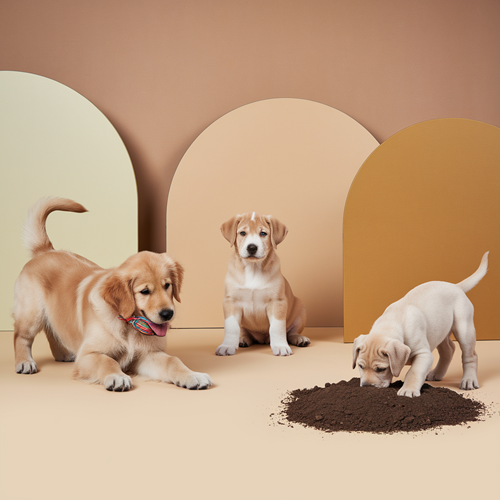
Every puppy comes with their own set of quirks—whether it’s nibbling on your ankles, barking at every sound, or turning your yard into a digging paradise. While these behaviors can feel overwhelming, they’re not problems to dread; they’re opportunities to teach valuable life skills. With the right strategies, you can transform chaos into calm and create a harmonious home where everyone thrives—including your furry friend.
Puppies aren’t being “bad” when they bite, bark, or dig—they’re simply exploring the world and testing boundaries. Biting is often linked to teething, barking stems from curiosity or excitement, and digging taps into their natural instincts. Understanding why these behaviors occur is key to addressing them effectively. For instance, ankle-biting isn’t about defiance—it’s a sign your pup needs an outlet for their energy. Redirecting that energy with tools like tug toys or chew ropes (KONG Classic Dog Toy or Ruffwear Gnawt-a-Stick ) sets clear boundaries while satisfying their need to gnaw.
Similarly, excessive barking often signals boredom or overstimulation. Teaching your pup commands like “quiet” paired with positive reinforcement—such as praise or playtime—can work wonders. Tools like the PetSafe SprayShield No-Bark Collar (a humane option that uses citronella spray) can help curb persistent barking without causing stress.
As for digging? Instead of scolding, designate a specific area in your yard as their “digging zone.” Fill it with sand or loose soil and bury toys or treats to encourage exploration there. This satisfies their instinct while protecting your flower beds.
Here’s how to tackle some of the most common challenges:
Stop Puppy Biting Naturally : Redirect biting behavior by offering durable chew toys like the Nylabone Dura Chew Textured Ring . When they nip, firmly say “ouch” and replace your hand with the toy. Over time, they’ll learn what’s acceptable to chew—and what’s not.
Reduce Excessive Barking : Combine training with environmental adjustments. For example, if your pup barks at passersby through the window, use frosted window film (Artpatio Static Cling Window Film ) to limit visual triggers. Pair this with short training sessions to reinforce “quiet” behavior.
Prevent Destructive Digging : If your pup loves digging indoors, try interactive puzzle toys like the Outward Hound Hide-A-Squirrel Puzzle Toy . These keep their mind occupied and redirect destructive tendencies into productive play.
Imagine walking into a living room where your socks stay intact, your furniture remains unchewed, and your backyard looks less like a war zone and more like a serene retreat. Sounds dreamy, right? With these simple tweaks, it’s totally achievable. The key lies in consistency and creativity—using tools and techniques tailored to your puppy’s needs.
For example, consider Lisa, who struggled with her Border Collie mix’s habit of chewing shoes. She swapped old sneakers for tough, long-lasting chews like the Benebone Wishbone Chew Toy . Not only did this save her footwear, but it also gave her pup hours of entertainment. Another owner, Mark, found success reducing his Beagle’s barking by introducing daily fetch sessions with the Chuckit! Ultra Ball Launcher . Physical exercise helped channel his dog’s energy into something positive.
By addressing tough behaviors early, you’re not just solving immediate issues—you’re equipping your puppy with lifelong skills. Whether it’s learning to chew appropriately, staying quiet during downtime, or digging only in designated areas, each lesson strengthens your bond and fosters mutual respect.
So the next time your pup sinks their teeth into your favorite slippers or turns your garden upside down, take a deep breath. With patience, innovation, and the right tools, you’ll turn those challenges into triumphs—and build a partnership rooted in trust and understanding. After all, a well-behaved dog isn’t born; they’re made—one small victory at a time.
Socialization is often misunderstood as simply exposing your puppy to new people, places, and experiences. But true socialization goes deeper—it’s about creating positive associations with the world around them. Done thoughtfully, it lays the foundation for a confident, well-adjusted adult dog who thrives in any environment. Let’s explore how to approach socialization in a way that builds resilience while prioritizing your pup’s emotional well-being.
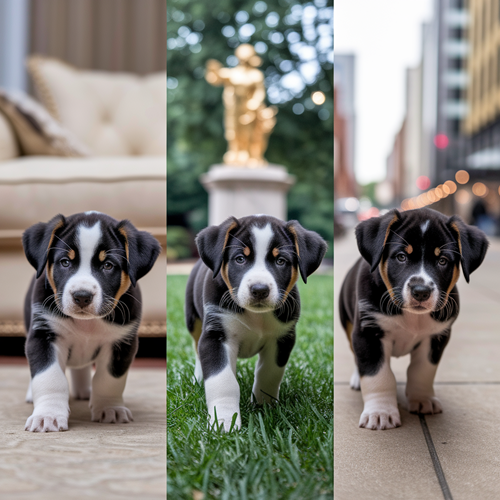
Imagine this: you bring your shy puppy to a bustling farmer’s market, hoping to “toughen them up.” Instead of gaining confidence, they cower under the table, overwhelmed by the noise and crowds. This scenario highlights why thoughtful socialization matters. Rushing into high-stimulation environments can backfire, leaving your pup anxious instead of assured.
The key is gradual exposure—starting small and building up. Begin with quiet parks or calm streets where distractions are minimal. Reward calm behavior with treats like Zuke’s Mini Naturals or heartfelt praise. Once they’re comfortable, introduce slightly busier settings, such as pet-friendly cafes or suburban sidewalks. Over time, these incremental steps help your puppy associate new experiences with positivity rather than fear.
For example, consider using products like the ThunderShirt Classic Dog Anxiety Jacket during early outings. Designed to provide gentle pressure, it mimics the soothing effect of a hug, helping nervous pups feel more secure while exploring unfamiliar surroundings.
Take Max, a timid rescue mix adopted by Sarah at just four months old. At first, Max would tremble at the sound of car engines and refuse to step outside during rainy days. Determined to help him overcome his fears, Sarah followed a gradual socialization plan. She started with short visits to quiet neighborhood parks, rewarding Max with tiny pieces of Blue Buffalo Wilderness Trail Treats whenever he remained calm. As his confidence grew, she introduced him to busier areas, always watching for signs of stress. If Max seemed uneasy, she’d retreat to a calmer spot and try again later.
Over months of patient effort, Max transformed from a fearful pup into a confident companion who now eagerly greets strangers and navigates crowded streets without hesitation. His journey reminds us that resilience isn’t built overnight—it’s cultivated through consistent, compassionate guidance.
Start Small : Focus on low-stimulation environments before moving to busier ones. Quiet parks, empty parking lots, or even your backyard are excellent starting points.
Use Positive Reinforcement : Pair new experiences with rewards your pup loves—whether it’s treats, toys, or enthusiastic praise. Products like the KONG Puppy Toy , stuffed with peanut butter or kibble, make great motivators.
Respect Their Limits : Pay attention to body language. If your pup seems anxious—ears pinned back, tail tucked, or excessive panting—retreat to a quieter space. Pushing too hard can erode trust.
Leverage Technology : Apps like PetDesk or Puppr can help track your puppy’s progress and remind you to revisit certain environments regularly to reinforce positive associations.
Thoughtful socialization doesn’t just prevent behavioral issues—it enriches your puppy’s life. A confident dog is more adaptable, less reactive, and better equipped to handle life’s unpredictability. Whether it’s meeting new friends at the dog park or navigating a busy city street, these skills ensure your pup grows into a happy, resilient companion.
So the next time you take your puppy out into the world, remember: it’s not about how many places you visit—it’s about how they feel while they’re there. With patience, creativity, and a focus on positivity, you’ll set them up for a lifetime of confidence and joy. After all, every wagging tail tells a story—and yours deserves to be one of triumph.
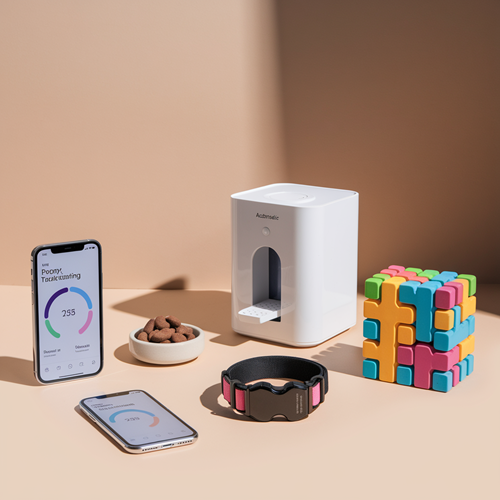
In the digital age, puppy training has evolved far beyond treats and leashes. Technology is now transforming how we teach, track progress, and bond with our furry companions. From apps that offer step-by-step guidance to gadgets designed to keep your pup engaged, these innovations are more than just tools—they’re game-changing resources for busy pet parents striving to raise confident, well-behaved dogs.
Raising a puppy can feel like juggling a full-time job while solving an ever-changing puzzle. That’s where tech steps in to simplify and streamline the process. Apps like Puppr or Dogo provide tailored guidance based on your puppy’s age, breed, and temperament. Need help teaching “sit” or “stay”? These platforms deliver video tutorials and progress trackers to ensure you’re both moving in the right direction. Pair them with interactive devices like the PetSafe Automatic Treat Dispenser , which reinforces good behavior even when you’re not home. With a simple app command, you can reward calm behavior or celebrate a successful potty break—all from your phone.
But here’s the truth: while tech amplifies results, it doesn’t replace the irreplaceable—quality time spent together. Think of these tools as supplements, not substitutes. They enhance your efforts, but the heart of training remains the connection between you and your pup.
Here’s how modern tech can revolutionize your training routine:
Training Apps : Platforms like Puppr feature celebrity dog trainer tips and customizable plans. For example, if you’re struggling with leash pulling, search for videos specifically addressing this issue. Similarly, Dogo gamifies training by turning lessons into challenges, keeping both you and your pup motivated.
Interactive Toys : Products like the Furbo Dog Camera let you monitor your puppy in real-time, toss treats, and even speak to them through two-way audio. Imagine being at work and still able to reward calm behavior or interrupt mischief before it escalates.
Wearable Tech : Devices like the Whistle GO Explore GPS Tracker aren’t just for finding lost pets—they also track activity levels and sleep patterns. This data helps you understand whether your pup is overstimulated or under-exercised, allowing you to adjust their routine accordingly.
Consider Rachel, a first-time dog owner who adopted an energetic Border Collie mix named Luna. Between her demanding job and Luna’s boundless energy, training felt impossible. Then she discovered Puppr and paired it with the iFetch Interactive Ball Launcher . The app provided structured lessons, while the gadget kept Luna entertained during downtime. Within weeks, Rachel noticed a calmer, more focused pup—and a household transformed from chaos to harmony.
Another success story comes from Mark, whose Shih Tzu struggled with separation anxiety. Using the Furbo Dog Camera , he could check in throughout the day, dispense treats, and reassure his pup with calming words. Over time, his dog grew more independent, reducing stress for everyone involved.
While gadgets and apps are game-changers, they thrive best when combined with hands-on interaction. After all, no device can replicate the joy of a belly rub or the comfort of your voice after a long day. Use technology to complement your efforts—not overshadow them.
Imagine coming home to a well-behaved dog who greets you calmly instead of jumping up or chewing shoes. It’s not magic—it’s the power of thoughtful integration of tech into your training toolkit. Whether it’s tracking milestones with an app, engaging your pup with interactive toys, or monitoring their health with wearables, these tools empower you to be the best pet parent possible.
So embrace the digital age and let tech lend a helping paw. With innovation on your side, there’s no challenge too big—or tail too wild—to conquer. Together, you’ll create a partnership rooted in trust, understanding, and shared success.
Raising a puppy is one of life’s greatest joys—but let’s be honest, it can also feel like running a marathon without training. The late-night potty breaks, the chewed-up shoes, the endless barking—it’s enough to test even the most patient person’s resolve. Yet here’s the truth: burnout doesn’t just affect you; it impacts your pup too. When patience runs thin, it’s time to focus on something just as important as training—your own well-being.
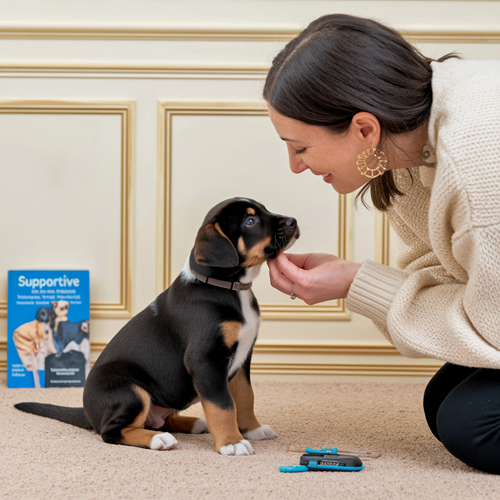
Training isn’t just about your puppy—it’s about you, too. Admitting you’re struggling doesn’t mean failure; it means you’re human. Progress with puppies is rarely linear, and expecting perfection only sets you up for frustration. Instead, celebrate small wins—a successful “sit,” a calm greeting at the door—and remind yourself that every step forward counts. After all, Rome wasn’t built in a day, and neither is a well-trained pup.
Take Sarah, for example, who adopted an energetic Labrador mix named Max. At first, she poured every ounce of energy into training him, determined to fix his jumping habit overnight. But after weeks of slow progress, she found herself snapping more often and feeling defeated. That’s when she realized something had to change—not with Max, but with herself. She started taking short walks alone to clear her mind, leaned on online communities like Reddit’s r/Puppy101 for advice, and began journaling small victories each day. Slowly, her renewed sense of calm translated into a happier, more cooperative Max.
Here are some actionable steps to help you recharge and show up as the best version of yourself:
Take Breaks : If you’re feeling overwhelmed, step away—even if it’s just for five minutes. Use that time to breathe deeply or sip a cup of tea. Products like Calm Lavender Mist can create a soothing atmosphere during these moments.
Lean on Support Networks : You’re not alone in this journey. Join Facebook groups, local puppy classes, or forums where other pet parents share their struggles and successes. Apps like Puppr even offer community features to connect with fellow dog lovers.
Celebrate Small Wins : Did your pup sit on command today? Celebrate it! Reward yourself with something meaningful—whether it’s indulging in your favorite snack or simply reflecting on how far you’ve come.
Practice Mindfulness : Tools like Headspace or Calm have guided meditations specifically designed for pet owners. These sessions can help you reset emotionally and approach training with fresh energy.
Prioritize Sleep : Exhaustion magnifies stress. Create a calming bedtime routine for both you and your pup using products like the Furhaven Orthopedic Dog Bed , which ensures they sleep soundly while you rest easy.
Remember, mistakes are part of the process—for both you and your puppy. What matters most isn’t perfection; it’s consistency. Showing up with love, patience, and understanding builds trust over time. Even on tough days, those efforts matter more than you realize.
So take a deep breath—you’ve got this. Every wagging tail, every clumsy leap toward you, every moment of connection reminds us why we chose this journey in the first place. Perfection isn’t the goal; connection is. And through that bond, both you and your pup will grow stronger together.
By prioritizing your own well-being, you’re not just investing in yourself—you’re creating a foundation for a harmonious relationship with your furry friend. After all, a happy pet parent makes for a happy pup.
Puppy training isn’t just about commands and corrections—it’s about fostering a relationship rooted in trust, joy, and mutual respect. This journey is more than teaching “sit” or “stay”; it’s about creating a bond that will last a lifetime. By embracing modern methods, leveraging technology, and prioritizing both your needs and your pup’s, you’ll not only survive this phase but truly thrive in it.
Gone are the days of rigid drills and outdated obedience tactics. Today’s puppy training focuses on collaboration, creativity, and understanding. For instance, tools like Puppr or Dogo offer step-by-step guidance tailored to your puppy’s age and breed, ensuring you’re equipped with proven strategies at every stage. Pair these apps with interactive gadgets like the Furbo Dog Camera , which lets you monitor your pup, toss treats remotely, and even speak to them through two-way audio. These innovations don’t just simplify training—they make it fun for both of you.
Imagine turning playtime into progress with products like the ZippyPaws Skinny Peltz No Stuffing Squeaky Toy . Not only does it keep your pup entertained, but it also channels their energy into learning. Every game becomes an opportunity to reinforce good behavior, transforming chaos into calm one playful moment at a time.
Let’s face it—raising a puppy can be exhausting. The key to success lies in finding balance. Burnout doesn’t just affect you; it impacts your pup, too. That’s why self-care is as important as training itself. Whether it’s taking five minutes to breathe deeply with a calming mist like Calm Lavender Mist or leaning on support networks like online forums and puppy parenting groups, small acts of self-care ensure you stay patient and present.
Products like Headspace or Calm offer guided meditations specifically designed for pet parents, helping you reset emotionally and approach training with renewed energy. And when it comes to sleep—because let’s be honest, puppies aren’t known for letting you rest—a cozy bed like the Furhaven Orthopedic Dog Bed ensures your furry friend sleeps soundly while you catch up on much-needed rest.
At the end of the day, puppy training isn’t about perfection—it’s about connection. Those wagging tails, soulful eyes, and sloppy kisses? They’re worth every challenge because they represent the bond you’ve built together. Every misstep, every triumph, and every moment of laughter adds up to something extraordinary—a partnership rooted in love, trust, and understanding.
So grab those high-value treats like Zuke’s Mini Naturals , cue the belly rubs, and embrace this adventure knowing you’re equipped with the ultimate blueprint. With modern tools, thoughtful techniques, and a commitment to showing up consistently—with love, patience, and understanding—you’ll transform frustration into fulfillment.
Remember, this journey isn’t just about raising a well-behaved dog; it’s about creating memories that will warm your heart for years to come. Through every wag, every leap, and every slobbery kiss, you’ll look back and realize: it was all worth it. Because in the end, the greatest reward isn’t a perfectly trained pup—it’s the unbreakable bond you’ve built along the way.
There are no reviews yet. Be the first one to write one.
You must be logged in to submit a review.
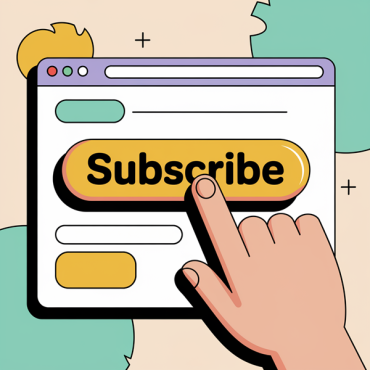
You cannot copy content of this page
Javascript not detected. Javascript required for this site to function. Please enable it in your browser settings and refresh this page.
